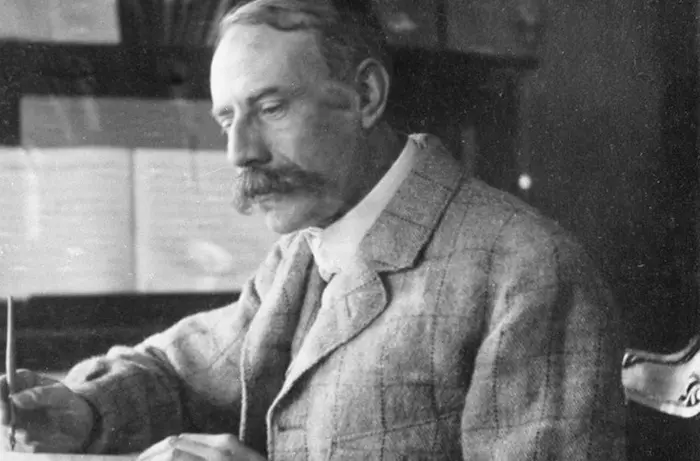Pomp and Circumstance March No. 4 is a renowned composition by Sir Edward Elgar. This piece is part of a larger collection known as the Pomp and Circumstance Military Marches. These marches include five pieces, and March No. 4 is particularly notable for its grandeur and emotional depth.
I. Edward Elgar: The Composer
Sir Edward Elgar was an English composer, born on June 2, 1857, in Broadheath, Worcestershire. He became one of England’s most prominent composers, particularly known for his orchestral works. His music is characterized by its lyrical melodies and rich orchestrations. Elgar’s style combines influences from both English and German musical traditions, reflecting his deep respect for the works of composers like Brahms and Wagner.
II. The Pomp and Circumstance Marches
The Pomp and Circumstance Marches were composed over a span of many years. Elgar wrote the first two marches in 1901, and they were premiered to great acclaim. The phrase “Pomp and Circumstance” is taken from William Shakespeare’s play “Othello,” which conveys a sense of grandeur and ceremony. These marches are often associated with formal events and celebrations, embodying a spirit of national pride and festivity.
III. The Creation of March No. 4
Pomp and Circumstance March No. 4 in G major, Op. 39, was composed in 1907. By this time, Elgar was already a well-established composer, having gained fame with works like the Enigma Variations and the first two Pomp and Circumstance Marches. The creation of March No. 4 came at a time when Elgar was deeply involved in various musical projects, yet he managed to produce a piece that stands out for its majesty and emotional impact. The march debuted to acclaim at the Royal Albert Hall in London, where its majestic themes and intricate orchestration captivated audiences. Elgar’s meticulous attention to detail and his profound understanding of orchestral dynamics are evident throughout the piece, reflecting his stature as a leading composer of the Edwardian era.
IV. Structure and Analysis
March No. 4 follows a traditional march structure, which typically includes a series of contrasting sections. The piece opens with a stately and grandiose introduction, characterized by strong brass and percussion. This introduction sets the tone for the march, establishing its ceremonial nature.
1. First Section: The Main Theme
The main theme of March No. 4 is introduced by the strings and woodwinds. It is a lyrical and flowing melody that exudes a sense of nobility and grace. This theme is then taken up by the brass, giving it a more powerful and majestic quality. The use of contrasting timbres in this section highlights Elgar’s skill in orchestration.
2. Trio Section
The trio section of March No. 4 provides a contrast to the main theme. It features a softer and more delicate melody, often played by the woodwinds. This section is typically in a different key, providing a sense of relief and variation. The trio section in March No. 4 is notable for its pastoral and serene character, evoking images of the English countryside.
3. Recapitulation and Coda
After the trio section, the main theme returns, bringing back the grandeur and ceremonial quality of the opening. This recapitulation is often more elaborate, with additional ornamentation and variations. The march concludes with a coda, a final section that brings the piece to a triumphant and majestic close. The coda of March No. 4 is particularly powerful, with the full orchestra playing in unison to create a resounding and celebratory ending.
V. Performance and Reception
Pomp and Circumstance March No. 4 was first performed on August 24, 1907, at the Royal Albert Hall in London. The premiere was conducted by Elgar himself and received an enthusiastic response from the audience. The march was praised for its melodic beauty and orchestral brilliance, cementing Elgar’s reputation as one of England’s foremost composers.
VI. Use in Ceremonial Contexts
Like the other Pomp and Circumstance Marches, March No. 4 has become a staple in ceremonial contexts. It is often played at graduations, parades, and other formal events. The march’s grand and uplifting character makes it particularly suitable for such occasions, symbolizing achievement and celebration.
VII. Legacy of Sir Edward Elgar and the Pomp and Circumstance Marches
Sir Edward Elgar’s contribution to music extends beyond the Pomp and Circumstance Marches. He composed numerous orchestral works, choral pieces, and chamber music that have become integral to the classical repertoire. His distinctive blend of English pastoralism and orchestral grandeur has left an indelible mark on the orchestral landscape, inspiring generations of composers and musicians worldwide. His music continues to be performed and celebrated worldwide, reflecting his enduring legacy as a composer.
See Also: Exploring Semi-Classical Music: A Fusion of Tradition and Innovation
VIII. Conclusion
Pomp and Circumstance March No. 4 stands as a testament to Elgar’s genius as a composer. Its combination of lyrical beauty, orchestral brilliance, and ceremonial grandeur makes it a timeless piece of music. Whether performed at a graduation or a formal event, this march continues to inspire and uplift audiences, embodying the spirit of celebration and achievement.

